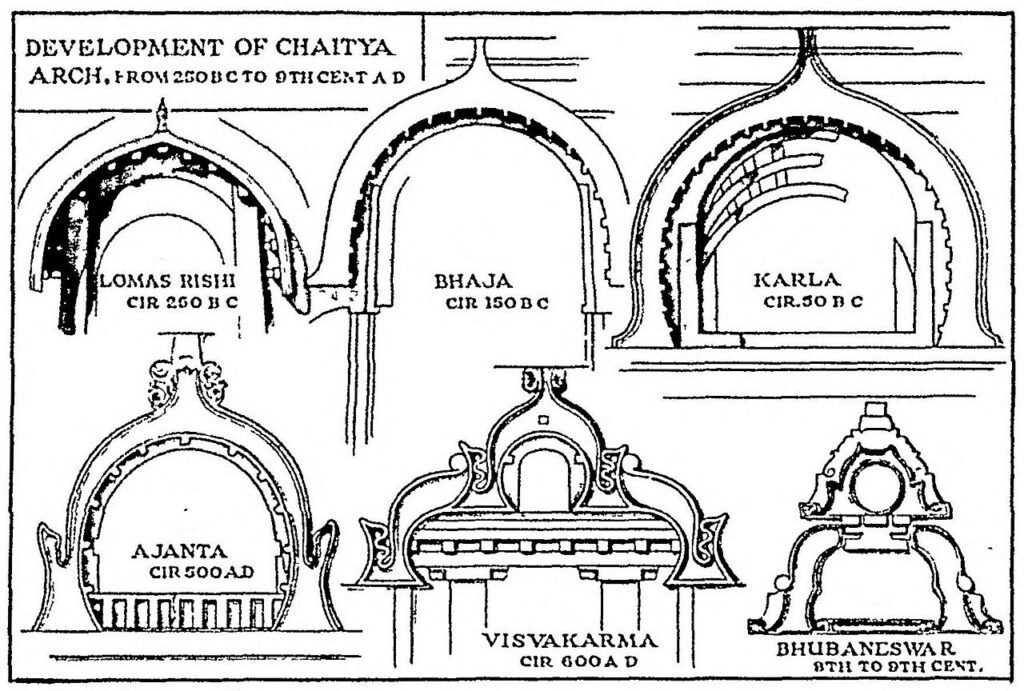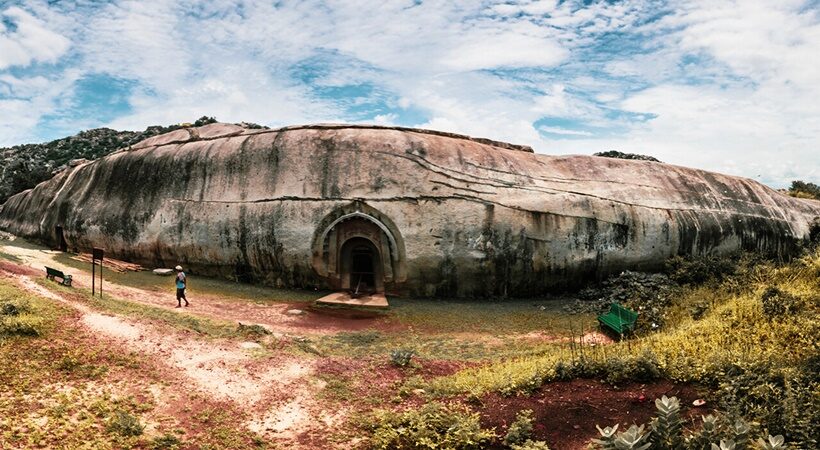The Barabar Caves, around 24 km north of Gaya, in Bihar, is all that remains of the lost Ajivika sect. Traced back to the 5th century BCE, the Ajivikas once competed with Buddhism and Jainism for influence. Barabar caves are a set of 7 rock-cut caves dating back to the third century BC. These are located on the twin hills of Barabar and Nagarjuni. These are also known as Lomas Rishi Cave, Sudama Cave and Vishwamitra Cave among the locals. Each of the Barabar caves, 4 in Barabar and 3 in Nagarjuni, are carved out of granite and feature two chambers each along with a highly polished surface, completely missing any kind of sculpture or embellishments.
Barabar caves are also known for their architecture and these are the very caves that saw the use of the Chaitya Arch in stone for the first time. The inscriptions found here date back to the Mauryan period. The oldest of these caves is the so-called ‘Lomas Rishi cave’, which is also considered a landmark in the architectural history of India.
It was here that the first known use of the ‘Chaitya arch’ in stone could be observed. This pattern of the rock-cut arch was later replicated in caves across India, including Ajanta, and Kanheri. These caves date back to Mauryan times as well. It is known from the still clear inscriptions found in these caves that King Ashoka assigned the four caves on Barabar hill to Ajivika monks in the year 261 BCE.

The Ajivika Sect religion probably emerged, in the Indo-Gangetic plains, 2500 years ago. Those were turbulent times. Not only was the region experiencing a great wave of urbanization, but there was also a great intellectual ferment taking place, which gave birth to Buddhism, Jainism and the Ajivika faith. Many great religious traditions emerged out of it and were termed as ‘nastika darsana’ or ‘heterodox philosophies’, as they did not believe in the Vedas. Some like Buddhism and Jainism transformed into thriving religions, while others perished. The Ajivika was one such religious tradition.
The founder of the Ajivika faith was a preacher named Makkhali Gosala, a contemporary of Gautama Buddha and Mahavira, the 24th Tirthankara of the Jains. A companion of Mahavira initially, Makkhali Gosala went his own way. Gosala also had his own rivalry with the Buddhists, frequenting in Buddhist texts as one of the ‘six heretics’ unable to solve philosophical problems, before Buddha comes in to save the day.
All the Ajivika texts have been lost. The only glimpse into the beliefs of the sect is available from the Buddhist and Jain sources. There was intense rivalry based on philosophy and patronage between these sects. It is no surprise that the Ajivikas have been portrayed as ‘Charlatans’ and their beliefs denounced.
From the limited source, it is believed that the Ajivikas were fatalistic, and their central tenet was of ‘Niyati’ or Fate. They were of the view that there was no free will, everything is entirely preordained, and nothing could change it. After the Avijikas faded off, the Barabar caves were occupied by Buddhists, Jains and Hindus and its first inhabitants disappeared from public memory.



















